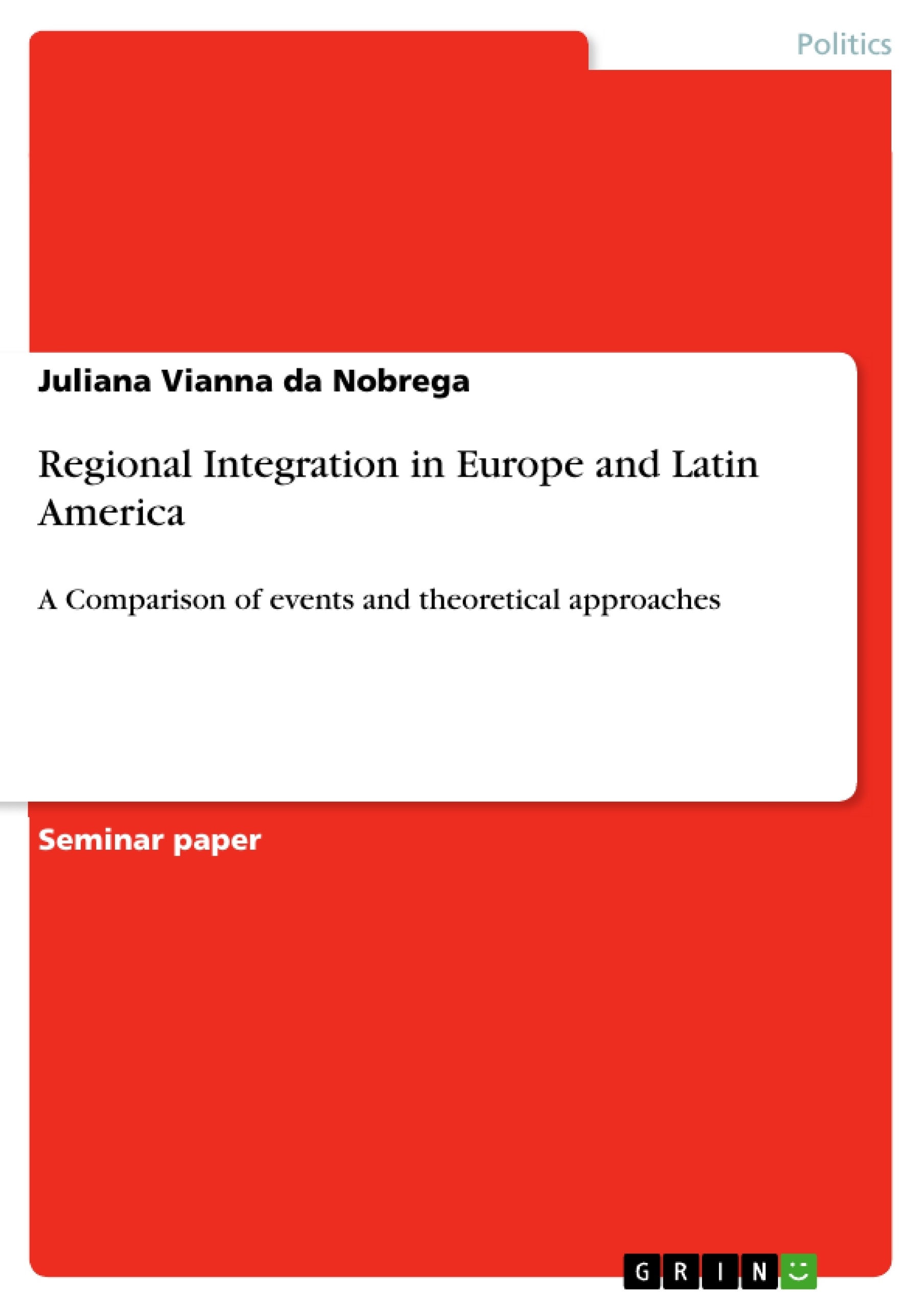The European integration has been in progress since shortly after the Second World War. Already in 1946, the British Prime Minister Winston Churchill held a speech in Zurich and within this speech he expressed the idea of France and Germany as the constituting countries of a European Union. At this time, the patriotic French press was outraged about this idea. But already in 1949 the Council of Europe was founded, and only two years later in 1951 the European Community for Steel and Coal was created and became effective in 1952. In 1957, the member states of the ECSC signed the Treaty of Rome to start the European Economic Community (EEC) (Schmuck, n.a.).
The European integration has been a unique process (Rosamond, 2006, S. 450) that lead also to a separate field of studies, the European integration studies. Even though Europe is unique and the integration process that has been taken place there is unique as well, efforts to compare the process in Europe with integration processes in other regions of the world were undertaken. I will tackle the matter with this regard. This paper will be concerned with the integration process in Europe compared to integration processes in Latin America. My motivation to do this arises from the fact that I am a Brazilian student and thus have a Latin American origin and I am studying in Germany, which is in my opinion and most probably not only in my opinion the most important constituting country of the European Union. It is not only the biggest economy in Europe but it is also one of the few constituting states of the predecessor of the EU the already mentioned ECSC and the EEC. A second fact, which is in my opinion intuitive, is the one what the differences of integration processes are and how those can be explained. The first world with Europe and the third world with Latin America might show different difficulties and challenges with respect to efforts on regional integration. [...]
Inhaltsverzeichnis (Table of Contents)
- Introduction
- Basic notions and general information with respect to the topic
- Regional integration processes in Europe and Latin America - A historical outline
- Regional integration processes in Europe and Latin America – Strengths and weaknesses
- Integration Theorists on integration in Europe and Latin America
- Summary and Conclusion
Zielsetzung und Themenschwerpunkte (Objectives and Key Themes)
This paper compares the regional integration processes in Europe and Latin America, focusing on the theoretical frameworks used to explain these processes. The main goal is to understand how these theories can be applied in different regional contexts.- Comparative analysis of regional integration in Europe and Latin America
- Historical overview of integration processes in both regions
- Strengths and weaknesses of integration efforts in Europe and Latin America
- Application of integration theories to different regional contexts
- Exploration of the potential for cross-regional learning and application of theories
Zusammenfassung der Kapitel (Chapter Summaries)
- Introduction: This chapter introduces the topic of regional integration, particularly focusing on the European Union and its comparison with Latin American integration efforts. It highlights the historical context, the uniqueness of the European integration process, and the motivation for conducting this comparative analysis.
- Basic notions and general information with respect to the topic: This chapter explores the concept of regional integration, providing various definitions and highlighting the importance of seeing integration as a process rather than a condition. It also connects the field of European integration studies to the broader domain of international relations.
- Regional integration processes in Europe and Latin America - A historical outline: This chapter presents a brief historical outline of the regional integration processes in Europe, focusing on the development of the European Union. It also summarizes the integration efforts in Central and South America, highlighting the formation of the SICA and MERCOSUR respectively.
Schlüsselwörter (Keywords)
The primary keywords and focus topics of this paper include regional integration, European Union, Latin America, MERCOSUR, SICA, integration theories, comparative analysis, historical context, strengths and weaknesses, and cross-regional learning.- Quote paper
- Juliana Vianna da Nobrega (Author), 2012, Regional Integration in Europe and Latin America, Munich, GRIN Verlag, https://www.grin.com/document/206830



